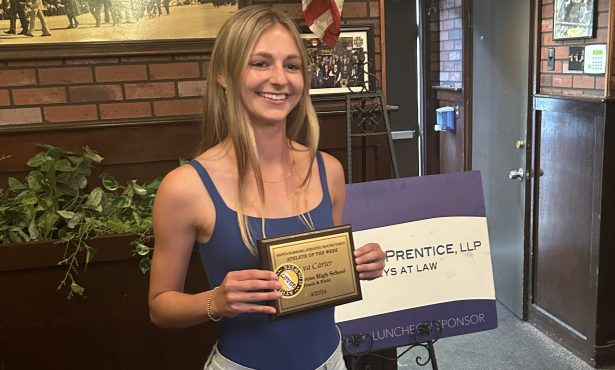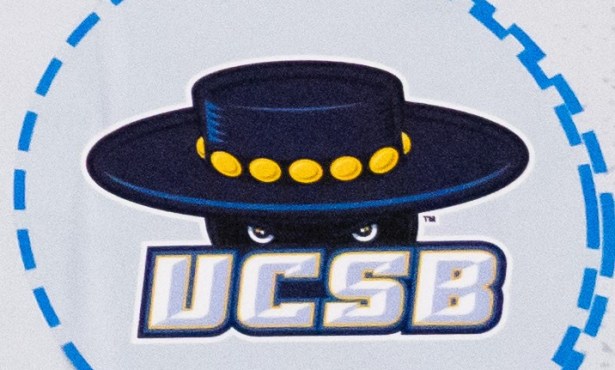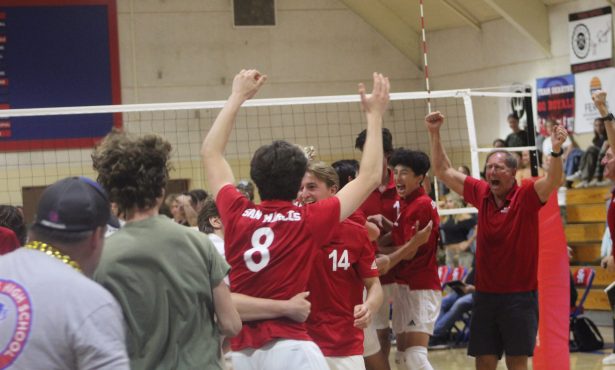The Voice of the Gauchos
S.B. Sports Writer Philip Patton Receives Honor
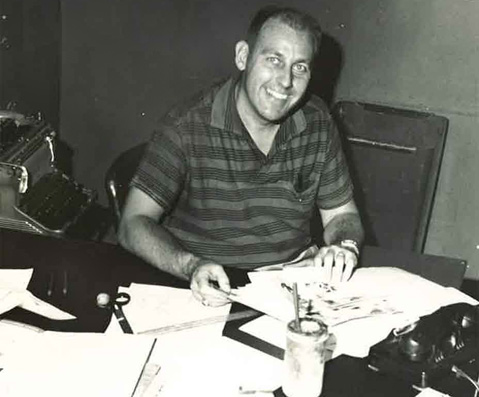
One of the most treasured newspaper clippings I’ve saved is a sports column dated January 24, 1971. It was the last time “Patton’s Press Box” appeared in the News-Press. It begins, “This will probably be the hardest column I’ve ever attempted.” In conclusion, the writer says he achieved “all the fulfillment ever wanted or needed by a man just doing his job to the best of his ability. And for that, we have each of you — friend and associate, athlete and reader — to humbly thank!”
Philip Patton’s last printed words were a true reflection of the man — unaffected, straightforward, and humble. He loved covering sports in Santa Barbara, especially in his dual role as the first play-by-play announcer of UCSB football and basketball, as well as the Gauchos’ beat writer. On many an occasion he would call a game over KTMS radio, write a detailed game story, and throw in a column or a sidebar.
As sports editor of the News-Press, Patton was my first boss when I began my career in 1968. His work ethic rubbed off on my colleagues John Nadel and Dave Kohl and me. We did not complain about working both early mornings (to get the afternoon paper out) and nights (to cover games), or coming into the office six days a week from September to April.
But the boss was not such a slave to the ringing phones and chattering AP and UPI sports teletypewriters that he would skip meal breaks. We would lunch at Caesar Uyesaka’s café on State Street. He took me to dinner at the Heidelberg Inn on Victoria Street and introduced me to Löwenbräu, when it was imported from Munich and had the taste of a craft beer decades before craft beers became the rage.
Saturday nights on the desk were pressure-packed because the Sunday paper was a morning edition. The top story might be a late UCSB game in Long Beach or San Diego. Patton would dictate his story over the phone, often having written just the opening paragraphs and composing the rest on the fly as the deadline approached. It was with respect and apprehension that I typed my first dictation from him.
The tone of his writing, win or lose, was always positive about the hometown teams. Having gotten his master’s degree at Northwestern, he was a Chicago Cubs fan, and as such, he learned to accept failure as an essential part of the athletic experience.
As Santa Barbara’s most dedicated fan, Patton harbored a vision that the community could not sustain. In his last column, he lamented the demise of minor-league baseball and car racing, two sports that he felt enhanced the city’s prestige. On the other hand, during his 16 years on the job here, he noted there had been “more teams to be covered and growing interests to be satisfied.” He had seen the Gaucho football team play in a bowl game and UCSB sports advance to University Division status. He played a part in the founding of the Santa Barbara Athletic Round Table.
It was not, tragically, a long-awaited retirement that brought this solid journalist to the end of his active career. It was throat cancer. On the night of October 9, 1971, Nadel — who had taken over the Gaucho beat — announced to listeners of the UCSB-Cal State Northridge football broadcast that Patton, his “friend and mentor,” had died. He was 45 years old. He was survived by a lovely wife, Rita, and seven children, one of whom, Mark Patton, became a fine sports writer.
UCSB’s venture into big-time football also died, from a financial hemorrhage, at the end of the 1971 season. It is gone but not forgotten. Many Gaucho gridders of the ’60s have become supporters of their alma mater’s athletic programs. The man who faithfully reported their exploits is not forgotten either. Philip Patton, the original “Voice of the Gauchos,” will be inducted into the Intercollegiate Athletics Hall of Fame on Saturday, April 26.
UCSB’s Hall of Fame Class of 2014 (new selections are announced every two years) also includes some pioneering teams and two outstanding athletes:
• The women’s volleyball teams of 1972-74: They reached three consecutive AIAW national championship Final Fours and finished third twice. The AIAW was the highest level of women’s intercollegiate athletics before the NCAA embraced the sports.
• The 2004 men’s soccer team: It established UCSB as a national power, setting the standard for the NCAA title that came two years later. The ’04 Gauchos boast the school’s best season record (21-1-3) and put on probably its greatest performance, a 5-0 drubbing of Duke in the NCAA semifinals. They tied Indiana 1-1 in the championship match, but the Hoosiers won a penalty-kick shoot-out to decide the title.
• Lindsay Taylor: The 6’8” center, an All-American selection in 2004, is the all-time leading scorer and shot blocker for the Gaucho women’s basketball team. She was a force in four NCAA tournaments, including her senior year, when the Gauchos reached the Sweet 16 and gave Connecticut its toughest game.
• Andy Sheaffer: The Carpinteria native capped his stellar track-and-field career at UCSB at the 1991 NCAA Championships, where he received All-America recognition by placing sixth in the hammer throw with a toss of 210’8”.
The Hall of Fame induction ceremony and dinner, part of this weekend’s All Gaucho Reunion, will be held at the Santa Barbara Art Foundry in the Funk Zone on Saturday evening. To make a reservation, call Christina Baglas at 893-5372.
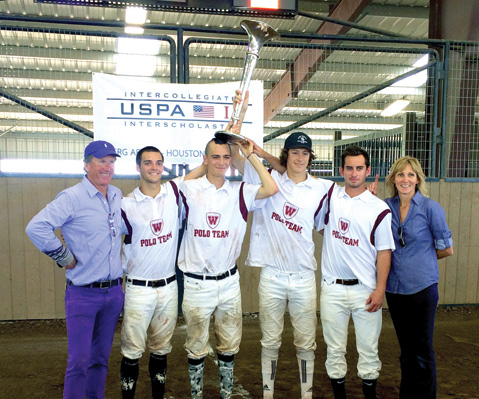
REPEAT CHAMPIONS: What do Stanford, Cornell, and Virginia have in common, besides being well-heeled universities? In that order, their polo teams lost to the horsemen of Westmont College, which claimed its second consecutive U.S. Polo Association Intercollegiate Championship this month. The Warriors demolished Stanford, 22-3, in the Western Regional Finals. In the nationals in Brookshire, Texas, they edged Cornell in the semifinals, 15-14, and rode past Virginia in the title match, 16-13.
Collegiate polo is the arena version, played on 100-yard indoor fields. “We do the phalanx battle formation,” said Westmont’s coach, John Westley of the Santa Barbara Polo School. “I picked it up from my British school rugby days and applied it to polo.”
Westmont was a No. 5–seeded team last year when it defeated Colorado State for its first national championship. “It was tougher this time around,” Westley said, even though his roster was intact: Patrick Uretz, the captain, and his brother Tony Uretz; David Samaniego, winner of the sportsmanship award at the nationals; and Jake Bergman. All but Tony Uretz will graduate this year.
TOP 100: Curly Guillen of Goleta led almost 40 Santa Barbara area finishers at the 118th Boston Marathon with his second sub-2:30 performance. He finished 75th out of 36,000 runners in 2:28:30. “This race is bigger than my own goals,” Guillen said. “When they put the medal around my neck, I started tearing up.”

